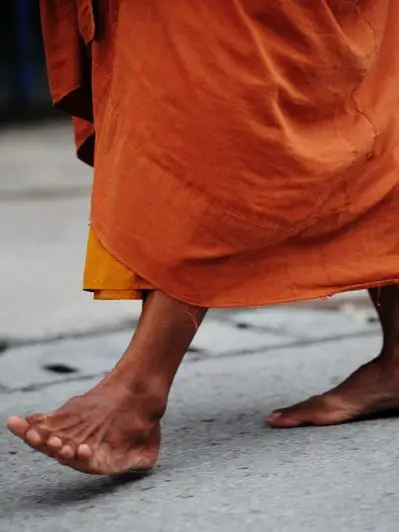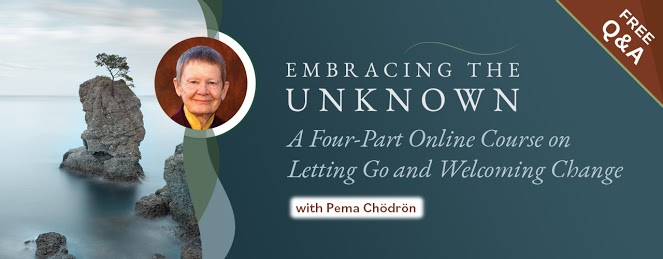Get To Know The Ins And Outs Of Walking Meditation
When people think about meditation, they often picture a monk sitting cross-legged in the lotus position. But it does not have to be like that. Actually, the other positions in which you can do meditation are just as good.
I might even argue that some positions are even better suited than plain sitting meditation.
But, like most people, I did not practice this form of meditation a lot in the beginning due to prejudices on my part. Luckily, I was able to shed these.
Let me try to convince you that walking meditation is indeed a valuable alternative to sitting meditation. I’ll also explain how you can practice it depending on the goal of the meditation or the circumstances or mood you are in.
- What is walking meditation?
- Is walking meditation suited for all types of meditation?
- How can you perform walking meditation?
- Pitfalls of walking meditation
- When to use walking meditation
- Is walking meditation as good as sitting meditation?
- The greatest proponent of walking meditation
- Spice up your walking meditation by walking a labyrinth
What is walking meditation?

I will start by stating the obvious because I want to make a point later: walking meditation is performing meditation while walking.
But meditation comes in many forms. We can have a formal and an informal meditation practice.
And walking meditation is suited for both types. This means that you can perfectly combine a walk in nature with an informal meditation session.
That is the form of meditation I use the most: I go for a walk with my dog and combine it with an informal mindfulness practice where I try to stay open to whatever is coming in through my senses: the beautiful colors in the sky, the smells of the freshly cut grass or the chirping of the birds.
Is walking meditation suited for all types of meditation?
If you read my article on how to choose the type of meditation suits you best, you will see that there are a lot of meditation styles around.
And not all of them can easily be performed during walking meditation.
There are two types of mediation that lend themselves wonderfully to be practiced walking.
The first is concentration meditation. And by this, I also mean the variant where you repeat a mantra to yourself. This is easily combined with the basic instructions I give in the next section.
The other is mindfulness meditation. When you go for a walk in nature, you can easily combine this with being mindful of your surroundings.
However, doing some sort of analytical meditation is less suited while walking. In this style of meditation, you ponder a question and reflect on it in a meditative way. The danger here is that you will all too easily fall into random thoughts since you are trying to do two things at once.
How can you perform walking meditation?
Simple concentration walking meditation
The basic instructions for walking meditation are straightforward:
Choose a small area where you can walk. It can be anything from a few meters up to 20 meters. But do not make it too long.
Stand at the beginning of your chosen area and notice yourself standing. Notice the weight of your body and notice your feet touching the ground.
Slowly lift your right foot and notice that you do this. Next, move your foot forward and notice this also. Lastly, notice yourself setting your foot down on the ground again.
Repeat the last steps with your right foot. And then again with your other foot until you reach the end of the area you set of for yourself.
Once on the other side, pause for a moment and see if you are still present or if you are daydreaming or thing about other stuff than the meditation. If you do, gently bring your attention back to your feet and slowly turn around.
Repeat for 10 to 15 minutes
In the video below, you can follow along with a guided walking meditation that uses concentration as a goal.
The following video presents some important aspects of walking meditation by a Buddhist nun at Plum village, the home of Thich Nhat Hanh.
Simple mindfulness walking meditation
The difference between mindfulness style meditation and concentration style meditation is that in mindfulness you do not have a fixed point of attention.
You can let your attention go from one object to another. However, you still need to be aware that you are paying attention. If you have a look at the definition of mindfulness by Jon Kabat-Zinn, mindfulness is said to ba ‘paying attention on purpose’.
This means that, although you can change from one point of attention to another one, you cannot start daydreaming. The reason is that daydreaming is not deliberate but automatic.
My preferred way of practicing walking mindfulness meditation is to go for a walk with my dog.

So, how to do it?

Next time you go for a walk, set an intention to be mindful of your surroundings. As you will be walking for some extended time, your mind will get unruly at some point, not far from where you started.
Setting an intention will help you keep on track.
You should start with a short but light concentration meditation. Look at the instruction in the paragraph above on how to do this. But do not let all your attention go towards your feet or legs. Keep some on the road you are traveling.
When you have walked like this for a few meters, you can start to open up to your senses. Start by noticing the colors and shapes around you. Usually, when I do this, opening up like this makes me filled with awe at the beauty I am surrounded with. Regardless of where I am, it is almost always beautiful.
You can now open up further and let the sounds and smells in. Once you have the full spectrum of your senses, keep this through your walk.
Obviously, your mind will start to drift. That is perfectly normal. And in this kind of meditation, it is not easy to catch it in action.
That is where your motivation comes in again. You should also set an intention to regularly check in with your thoughts to see if you are still mindful.
Pitfalls of walking meditation

In my mind, the main pitfall of walking meditation is to not take it as seriously as sitting meditation.
I know this was my mistake.
And therefore, I did not put in the effort necessary to make it succeed.
To have a proper meditation session, you need to follow the instructions, but you also need to put in the necessary effort.
Meditation is not like sports, where you exert yourself. No, it is all in the mindset with which you do the practice.
You need to be very clear about what you want to do: to meditate. And not having a walk in the park while you daydream.
Don’t get me wrong. You will daydream. There is no doubt about that. And you should not beat yourself up about this. But your intention needs to be to catch this as soon as possible and to come back to the present moment with all its impressions.
If you do not have this intention firmly ingrained, you will get nowhere with your practice.
But, as with any meditation, do not stress too much over it if you fail. Just re-affirm your intention and start afresh.
Most importantly: do not beat yourself up when you lose the meditation. On the contrary, give yourself a thumbs up when you regain the meditation. This tells your subconscious that this is the desired result: get back to the meditation as soon as possible.
When to use walking meditation
There are a number of excellent reasons to choose walking meditation.
First, you might be the type of person that has a lot of trouble sitting still for a longer period of time.
Walking is then an excellent alternative!
Just remember to do some sitting sessions once in a while too. You will learn a great deal from the discomfort you will experience. The lessons are in not caving in and noticing that you are very much able to stay with unpleasant experiences. In fact, they make you stronger.
Second, use it to diversify your practice when you start to do longer meditations or if you are holding an at-home retreat.
Sitting for extended periods if very taxing on the back. So walking is a welcome change.
Third, use it when you are tired.
Doing sitting meditation when tired has the potential to make you fall asleep. I find this is a very unpleasant feeling. So I then prefer to have a walking meditation session to keep me awake.
Is walking meditation as good as sitting meditation?
The simple answer is yes. Sitting, walking, standing, or lying down, all are excellent positions to do meditation. And they are all equivalent when it comes to developing concentration.
As said in the previous paragraph, when doing analytical meditation, sitting or lying down is the best.
But when you go to yoga, all the asanas (postures) are used for meditation and are supposed to have their own benefits.
I’m not sure this is true, but it just shows that the exact posture does not matter, but it is the act of meditating that is of importance.
The greatest proponent of walking meditation

At this moment, the greatest proponent of walking meditation is Thich Nhat Hanh.
He is a zen Buddhist that was nominated for the noble peace price by no one less than Martin Luther King, as you can read in the link.
He uses walking as a gateway into mindfulness. If you are interested, Thich Nhat Hanh hosts a course at Sounds True. You can get some free lessons if you sign up via this link. It is more than worth it!
Here are some quotes by Thich Nhat Hahn on walking meditation:
The mind can go in a thousand directions, but on this beautiful path, I walk in peace. With each step, the wind blows. With each step, a flower blooms.
Thich Nhat Hahn
People sacrifice the present for the future. But life is available only in the present. That is why we should walk in such a way that every step can bring us to the here and the now.
Thich Nhat Hahn
The earth is so beautiful. We are beautiful also. We can allow ourselves to walk mindfully, touching the earth, our wonderful mother, with each step. We don’t need to wish our friends, ‘Peace be with you.’ Peace is already with them. We only need to help them cultivate the habit of touching peace in each moment
Thich Nhat Hahn
Walk as if you are kissing the Earth with your feet.”
Thich Nhat Hanh, Peace Is Every Step: The Path of Mindfulness in Everyday Life
Spice up your walking meditation by walking a labyrinth

As a last option for you walking meditation, and for those who do not want to just walk up and down a lane, you should definitely try walking a labyrinth.
It is a fun and engaging way to perform meditation!
Walking a maze also has the advantage that you always need to be alert to where the labyrinth takes you now.
This meditation is performed like the other meditations in this article. Just make a labyrinth with stones or draw one on the ground with chalk and you are set.
Happy walking!
Featured image by ROMAN ODINTSOV from Pexels
Hi, I’m Olivier Devroede and I have been meditating seriously since 2009.
Due to the great benefits I have seen in meditating, I decided to become an MBSR trainer myself and start a blog.




